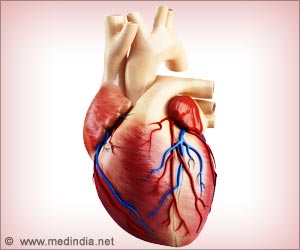To treat plastic bronchitis occurring in children, researchers developed new imaging tools and used minimally invasive catheterization techniques.

‘The primary cause of plastic bronchitis occurring in children is a lymphatic flow disorder, due to abnormal lymphatic flow into lung tissue.’





The authors reported their retrospective study of 18 children with plastic bronchitis at The Children's Hospital of Philadelphia (CHOP), in Circulation, the journal of the American Heart Association. The study, which describes the pathophysiological mechanism of plastic bronchitis and a treatment approach, arose from collaboration between Maxim Itkin, M.D., an associate professor of Radiology in the Perelman School of Medicine at the University of Pennsylvania, and Yoav Dori, M.D., a pediatric cardiologist in the Cardiac Center at The Children's Hospital of Philadelphia (CHOP). They co-lead a specialized team dedicated to the care of lymphatic disorders as part of the Center for Lymphatic Imaging and Interventions at The Children's Hospital of Philadelphia and the Hospital of the University of Pennsylvania.
"This is a new treatment option for children with plastic bronchitis, and has the potential to offer long-term improvement of this condition," said Dori. "This procedure may even provide cure and avoid the need for a heart transplant."
The current study builds on the team's 2014 article in Pediatrics, the first case report of the successful use of their technique in a patient with plastic bronchitis. "We have expanded on that study to report short-term outcomes in a larger group, and to share insights into the development of plastic bronchitis, which has been poorly understood," said Itkin. In addition to heart patients, children and adults with idiopathic plastic bronchitis, in which the cause is unknown, have also been treated successfully using these techniques.
Itkin and Dori discovered that the primary cause of plastic bronchitis is a lymphatic flow disorder, due to abnormal lymphatic flow into lung tissue. Because physical examinations and conventional imaging may not provide specific findings, lymphatic flow disorders often go undiagnosed.
Advertisement
Plastic bronchitis may occur in children as a rare complication of early-childhood heart surgeries used for single-ventricle disease, in which one of the heart's pumping chambers is severely underdeveloped. Approximately 5 percent of children surviving this surgery experience plastic bronchitis because the surgery alters venous and lymphatic pressure. The authors argue that this altered pressure may interact with pre-existing anatomical differences in the patients' lymphatic vessels.
Advertisement
After identifying the leakage site in a lymphatic vessel, the lymphatic team intervenes, using a technique called lymphatic embolization. Through small catheters, the team blocks the abnormal flow with a variety of tools: coils, iodized oil, and covered stents, based on an individual patient's needs.
In the current report, the team was able to perform lymphatic embolization in 17 of their 18 patients, ranging from age two to age 15 (median age 8.6 years). Fifteen of those 17 patients had significantly improvements in cast formation, in some cases being cast-free longer than two years. Patients had transient side effects of abdominal pain and hypotension (low blood pressure), but the authors reported the procedure appeared safe in their patient group.
Source-Eurekalert














